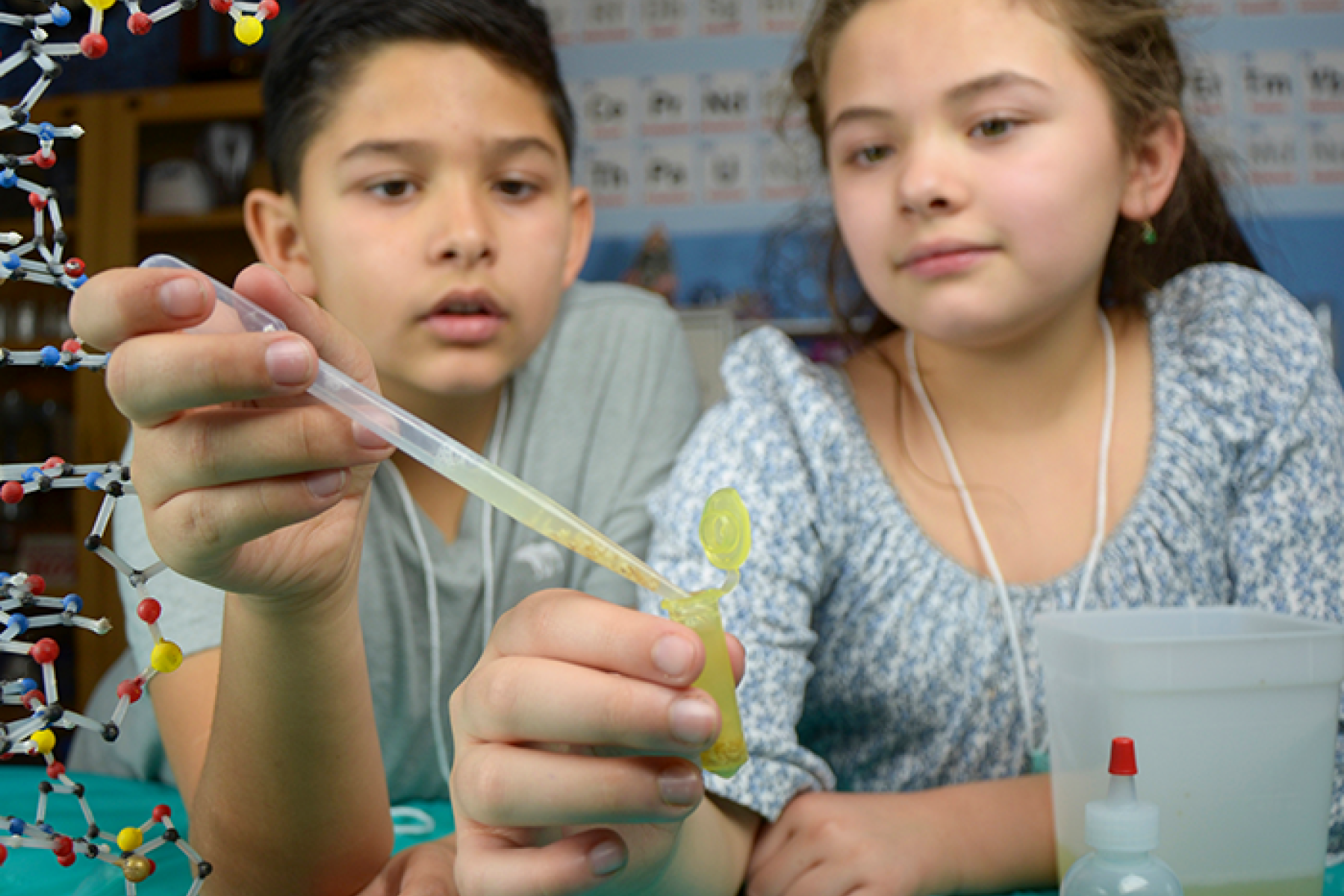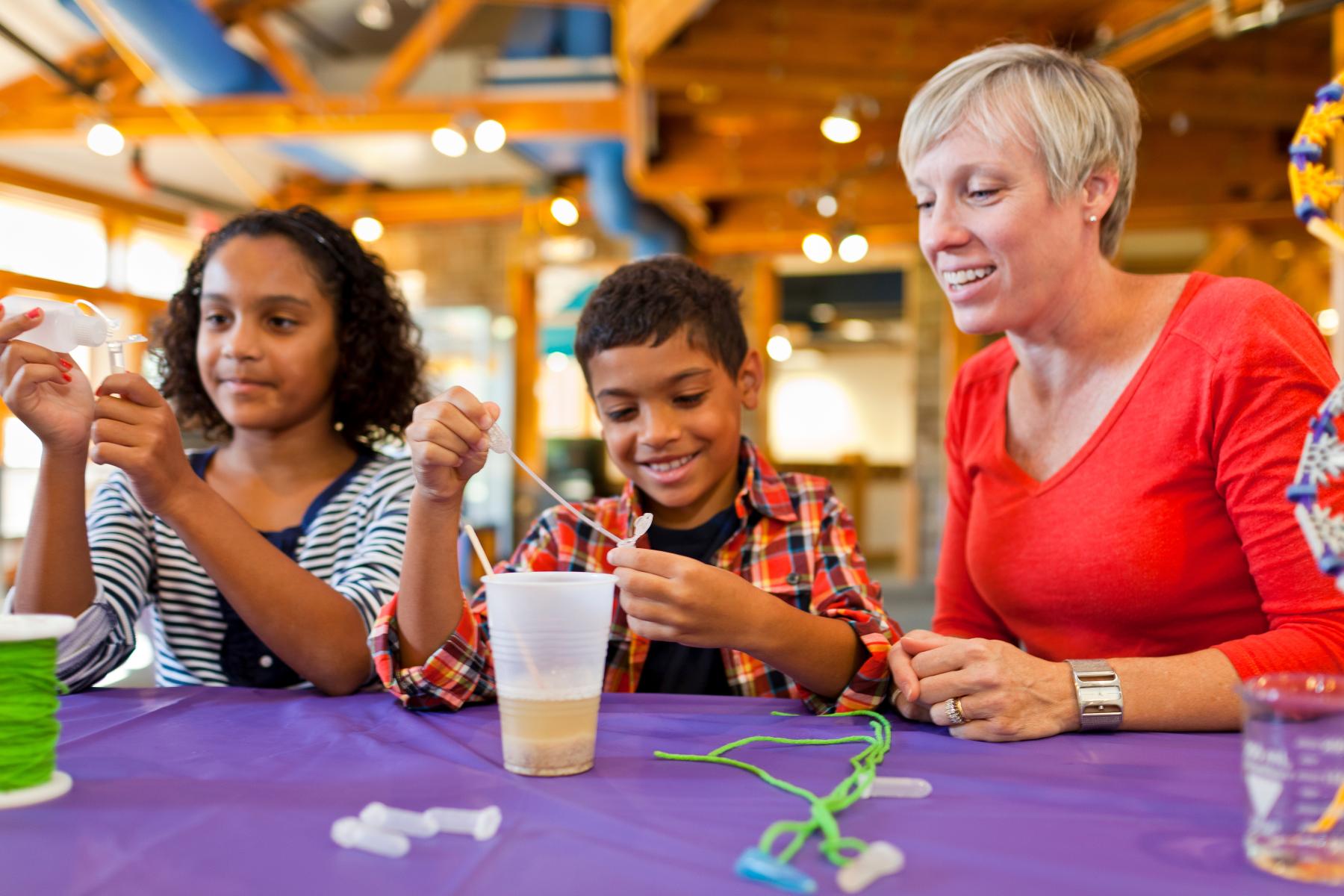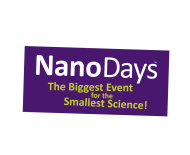DESCRIPTION
"Exploring Structures - DNA" is a hands-on activity in which visitors create a necklace of wheat germ DNA. They learn that self-assembly is a process by which molecules and cells form themselves into functional structures.
DESCRIPTION
"Exploring Structures - DNA" is a hands-on activity in which visitors create a necklace of wheat germ DNA. They learn that self-assembly is a process by which molecules and cells form themselves into functional structures.
TRAINING VIDEOS
OBJECTIVES
BIG IDEA
Self-assembly is a process by which molecules and cells form themselves into functional structures.
LEARNING GOALS
Self-assembly is a process by which molecules and cells form themselves into functional structures.
Researchers in the field of nanotechnology are using materials that self-assemble—like DNA—to create new materials and technologies smaller than 100 nanometers in size.
NANO CONTENT MAP
Nanometer-sized things are very small, and often behave differently than larger things do.
Scientists and engineers have formed the interdisciplinary field of nanotechnology by investigating properties and manipulating matter at the nanoscale.
Credits
Sciencenter
Developed for the NISE Network with funding from the National Science Foundation under Award Numbers 0532536 and 0940143. Any opinions, findings, and conclusions or recommendations expressed in this product are those of the authors and do not necessarily reflect the views of the Foundation.
Creative Commons Attribution Non-Commercial Share Alike 3.0 United States (CC BY-NC-SA 3.0 US).
View more details

NISE Network products are developed through an iterative collaborative process that includes scientific review, peer review, and visitor evaluation in accordance with an inclusive audiences approach. Products are designed to be easily edited and adapted for different audiences under a Creative Commons Attribution Non-Commercial Share Alike license. To learn more, visit our Development Process page.




